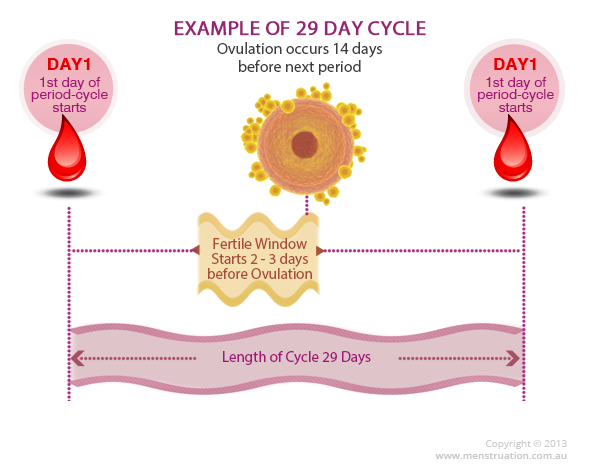Your body gives you many signals about your fertility throughout the month – you just need to know how to read them.
If you have spent most of your life being caught by surprise each time your period comes or wondering if you are fertile now or whether were you fertile last night… then these signals are welcome news.
The fact is you are only fertile at certain times during your menstrual cycle – these times are
- during mid cycle ovulation
- and possibly during your natal lunar phase fertile time
It is essential for every woman to learn how to read her own body. It is a basic survival skill.
The diagram below sets out the basic biological timing of an average 29 day cycle. Day 1 of bleeding is referred to as Day 1 of the menstrual cycle. The length of the cycle is measured from Day 1 of one cycle (bleed) to Day 1 of the next cycle (bleed).

Ovulation (when the egg is released) generally occurs 14 days before the next bleed. So for different cycle lengths, ovulation can occur at different times. This is a rough guide only, as ovulation can be delayed, for example, due to sickness or stress. The fertile window starts a few days before ovulation when cervical mucus starts to turn wetter and more profuse.
| Cycle Length |
Probable ovulation Day |
| 25 |
11 |
| 26 |
12 |
| 27 |
13 |
| 28 |
14 |
| 29 |
15 |
| 30 |
16 |
| 31 |
17 |
| 32 |
18 |
| 33 |
19 |
| 34 |
20 |
| 35 |
21 |
This Biological model does not take into account lunar fertility which can occur at any time during the cycle see Two Fertile Times
Continue to Starting to Chart your menstrual Cycle – The tools you can choose


